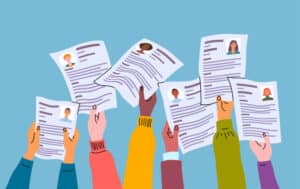In the realm of professional communication, the out of office message stands as a small yet significant beacon, indicating a pause in the usual flow of work. Whether due to vacation, business travel, or personal leave, crafting the perfect out of office message is an art that blends courtesy, clarity, and continuity in business communications. Let’s explore how to create an effective out of office message that maintains professionalism while you’re away.
The Importance of a Well-Crafted Out of Office Message
An out of office message does more than just inform senders of your absence; it serves as a reflection of your professionalism and consideration for others’ time and needs. It’s particularly crucial in recruitment, where timely communication can be the difference between securing a top candidate and missing out on a great hire. A thoughtful message ensures that your professional responsibilities are managed effectively, even in your absence.
Key Elements of an Effective Out of Office Message
- Clear Dates of Absence: Specify the start and end dates of your absence to set clear expectations for your availability.
- Reason for Absence (Optional): While not always necessary, briefly stating the reason for your absence (e.g., attending a conference, on annual leave) can provide context to the sender.
- Point of Contact: Include the name, position, and contact information of an alternate contact who can assist in your absence. This ensures continuity in communication and prevents delays in decision-making or project progress.
- Personalized Touch: A touch of personalization can make your message more relatable and less automated. A simple wish for a good day or expressing gratitude for the sender’s understanding adds warmth to your response.
- Professional Signature: Conclude with your professional signature, including your position and company. This maintains the professional tone of the message.
Crafting Your Message: A Step-by-Step Guide
- Greeting: Start with a polite greeting. E.g., “Thank you for your email.”
- Notification of Absence: Clearly state that you are currently out of the office with the exact dates of your absence.
- Alternative Contact: Provide the details of an alternative contact person.
- Return Date: Mention when the sender can expect a response from you.
- Personal Touch: Add a personal note or professional tip related to your industry or role.
- Signature: End with your professional signature.

The Art Of The OOO: Three Different Examples
Let’s explore three different examples of out of office messages and what makes each of them effective.
Example 1: The Basic Professional
“Thank you for your email. I am currently out of the office and will return on [Return Date]. During this time, I will have limited access to email. For immediate assistance, please contact [Alternate Contact Name] at [Alternate Contact Email]. I appreciate your understanding and will respond to your email as soon as possible upon my return.”
What Makes It Good: This message is concise and to the point. It clearly states the return date and provides an alternative contact for immediate needs. It’s polite and appreciates the sender’s understanding, maintaining professionalism.
Example 2: The Detailed Informer
“Hello and thanks for your message! I’m out of the office attending the Annual Marketing Conference and will be back on [Return Date]. This event is a great opportunity for our team to stay ahead of industry trends, and I’m excited to bring back new ideas. If your matter is urgent, please reach out to [Alternate Contact Name] at [Alternate Contact Email], who will be happy to assist you. Otherwise, I look forward to addressing your email when I return. Have a great day!”
What Makes It Good: This example adds a personal touch by sharing the reason for the absence, which can help build rapport with the sender. It also reassures the sender that their message will be addressed upon return. The friendly tone and well-wishes at the end add a warm, personal touch.
Example 3: The Creative Touch
“Hello! You’ve reached the inbox of [Your Name], but I’m on an adventure in the digital detox land from [Start Date] to [End Date] and won’t be able to check my emails. Fear not, for [Alternate Contact Name] has bravely volunteered to be your guide in my absence. You can reach them at [Alternate Contact Email]. If your quest can wait, I’ll be thrilled to embark on it with you upon my return. Thanks for your understanding, and may your inbox be merciful in my absence.”
What Makes It Good: This message stands out by incorporating creativity and humor, making it memorable. It’s particularly effective in industries or roles where creativity is valued. It includes all the necessary details, such as the period of absence and an alternate contact, but delivers them in an engaging way.
In Conclusion
The out of office message is a vital tool in professional etiquette, ensuring smooth communication flow even in your absence. By crafting a message that is clear, considerate, and informative, you maintain your professional responsibilities and demonstrate your commitment to effective communication. Whether you’re in recruitment or any other field, taking the time to craft the perfect out of office message is a reflection of your professionalism and care for your work relationships.









